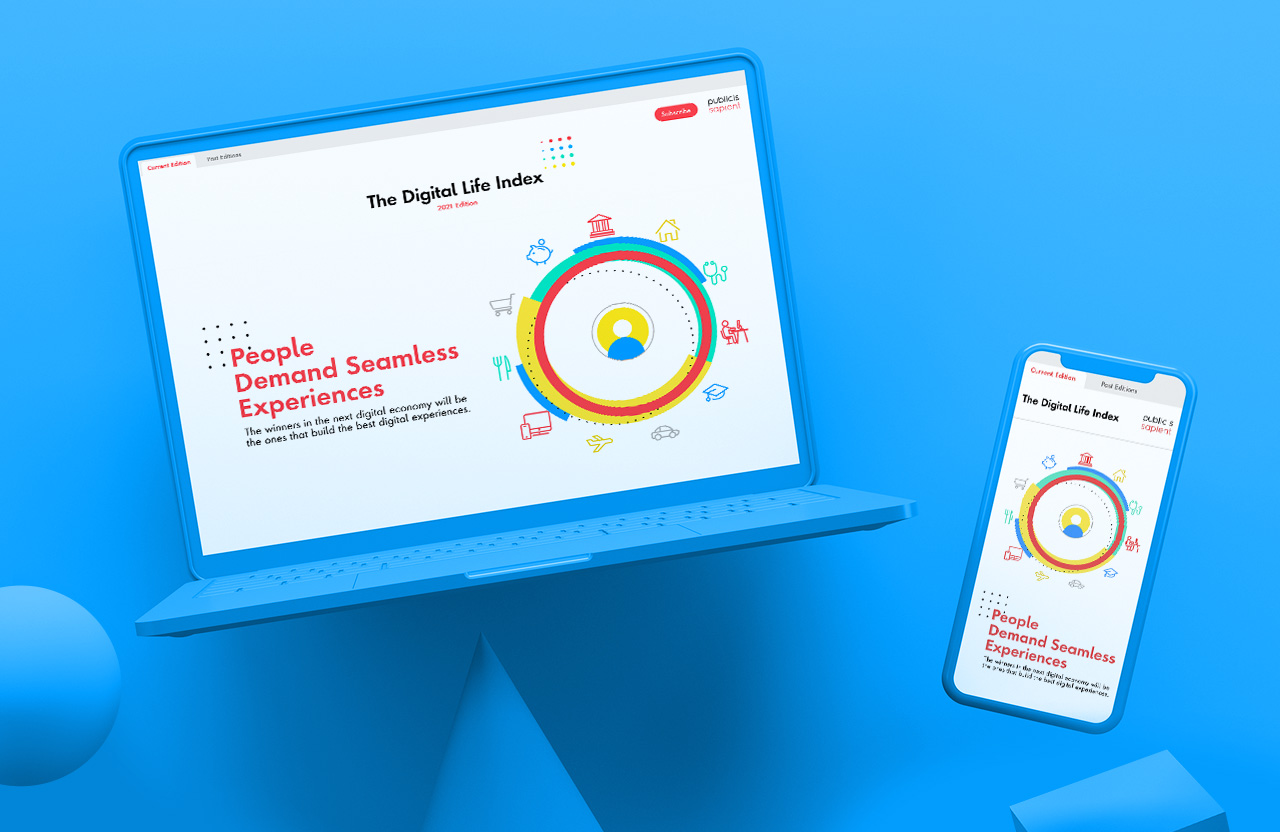What issue can we solve for you?
Type in your prompt above or try one of these suggestions
Suggested Prompt



Insights
Emerging Trends in Consumer Banking Post-Covid
Emerging Trends in Consumer Banking Post-Covid
Why Traditional Financial Institutions Need to Double Down Now
Banks and financial institutions may have weathered the COVID-19 pandemic, but low interest rates and fewer loan losses than anticipated pose a challenge to their operating incomes. This is especially true among superregional and regional banks with fairly sizable footprints.
While branch networks continue to demonstrate value for wealth management and planning related conversations, physical presence for banks that only serve up deposit and loan related products are unlikely to last given the permanence of fintech, Big Tech and transforming giants like Bank of America and JPMorgan Chase.
With that, we believe that in the next 18 months, the following trends will have a material impact on the consumer banking landscape in the United States.
1. Bank consolidation
We are predicting increasing mergers and acquisitions especially among the top 50 banks. There are already ample data points suggesting the economics do not work for mid-sized banks, especially those with deposit-only books. The current funding shortage does not help these banks accelerate their very much needed digital banking and technology efforts. The following notable banks merged in the last 24 months:
- SunTrust + BB&T = Truist = $450 billion assets; $320 billion deposits
- M&T Bank + People’s United = $200 billion assets
- Webster Bank + Sterling Bancorp = $65 billion assets; $52 billion deposits
- Huntington Bank + TCF = $168 billion assets
What to do:
Rethink your strategy in combination with several banks. Take the opportunity to redefine which segment of the market you want to differentiate and win. Use the accretive funding from the combination as a means to commence your digital banking investments to future proof the new entity.
2. Customer centricity at scale
We believe bigger banks, especially among the top 15, will move to fully operationalize customer centricity at scale. To accomplish this, they will likely embrace enterprise-wise agile operating models. They will move beyond small pockets of agile teams driving digital product and feature development to reimagining operations for the entire company wholesale.
At its core, the new operating model will break down traditional product boundaries, accelerate outcomes and overhaul cultures. This kind of shift will give traditional banks the chance to go toe-to-toe with Big Tech, fintech, etc.
What to do:
Orient the work you need to get done around value. Rethink value against both customers and the business and through that process arrive at an initial set of journeys.
3. Open banking in the United States
Open banking, initially available in the United Kingdom, is designed to bring more competition and innovation to financial services. The Competition and Markets Authority, a regulatory department of the U.K. government, set up open banking to even the playing field between traditional banks and new challenger banks. The directive allowed smaller banks to access select data that larger banks had in their application program interfaces (APIs). Sharing non-personally identifiable information (PII) broadly achieved more personalization and enhance customer experiences.
Many banking executives are not entirely sure of what to make of open banking and payments in the United States. The U.S. government hasn’t passed comparable open banking regulations to outline the specific requirements for compliance. Stateside, the whole situation is murky.
In contrast, the European Union clearly defined a regulatory framework – through the Revised Payment Services Directive (PSD2) – that requires banks to allow access to their data. Though the road has been circuitous, Europe has rolled out open banking by now. Without similar regulatory clarity in the U.S., banks are left to decipher the concept for themselves – creating both opportunity and uncertainty.
Per conversations with several experts, we believe the U.S. needs to establish an open banking regulation that brings clarity to this space over the next 18 months.
What to do:
Banks should get prepared. They have the opportunity to get ahead of the game rethinking their business strategy, building/exposing APIs and partnering with fintechs that can truly foster innovation.

Are you ready for Open Banking?
In this webcast we'll be looking at what you need to do to get ahead of the competition and realize the full value of opwn banking.
4. Core banking modernization
Cloud computing can help banks keep up with the pace of technological change, reduce maintenance costs, enhance the customer experience, comply with regulations and accelerate engineering practices.
But many banks fail to appreciate one of the most beneficial aspects of cloud adoption: the ability to modernize an organization’s core banking platform.
Every financial institution has a system that powers their banking transactions. Historically, this core banking platform was on premise, but banks still need one within the cloud environment.
Moving to the cloud is becoming more affordable thanks to the availability of both cloud providers (Amazon Web Service, Microsoft Azure, Google Cloud Platform, etc.) and startups that build core banking in the cloud (Mambu, 10x, FIs, etc.).
The German startup Mambu is pioneering a software as a service (SaaS) cloud banking platform it calls “composable banking.” Rather than locking companies into hard-coded integrations, composable banking lets companies build and change their banking products quickly and easily – essentially letting them compose what’s right for them entirely in the cloud.
What to do:
Banks should consider modernizing their core banking platforms. Building a core banking platform in the cloud would enable composable banking, a revolutionary approach to designing and delivering financial services.
5. Expansion of embedded finance
Lastly, we expect the growth of embedded finance, digital banking services offered by non-banks, to continue. Telecommunication companies, hotels and auto manufacturers are increasingly integrating financial products and services into their digital platforms. The next wave of transformation for just about every organization will lie at the intersection of services and commerce.
Aside from the B2C impact (e.g., Walmart, Marriott, Starbucks, etc.), we see the growing trend of B2B and B2B2B companies digitalizing their supply chains, simplifying their finance organizations and making it easier to vendors to pay seamlessly. At its core, they are implementing capabilities typically common in digital banks, such as secure, real-time payments and collateralized borrowing.
What to do:
Over the next ten years, every company that deals with commerce will need digital banking functionality. Although embedded finance is a threat, established banks should look into ways they can make the technologies that enable this trend work to their advantage. Banks should explore ways they can capitalize on these same technologies to reach new distribution channels or elevate their current products. They can also move in the direction of offering solutions to these adjacent verticals.
Next steps
Based on these five trends, the landscape for consumer banking is poised for a seismic change over the next 18 to 24 months. As new players capture greater market share, the industry will look materially different.
Since much is already in flux, this is the perfect time for banks to get ahead of these trends and position themselves for success. To seize this moment, recently integrated banks will need to reassess a few aspects of their old companies to establish a few crucial qualities:
Refine strategy
Recently merged companies will need to establish a new brand and reassess their existing strategies for customer engagement and product management. Throughout the integration process, it’s important to preserve and refine the best products from either organization – discarding whatever’s superfluous. They need to determine just how many products they really need in the marketplace.
Improve core banking platform
As two financial institutions merge, they should perform a comprehensive audit to determine which banking platform to preserve going forward. They should consider which platform will best serve the existing customers from both and start moving more elements to the cloud. Banks that decide to build core banking platforms directly in the cloud will benefit from the flexibility and speed of composable banking.
Infuse agile throughout CX operating model
Companies need to move past PowerPoint presentations on customer journeys and start to create large-scale agile teams to drive execution of backlogs. It’s not enough to run 12-week engagements with three sprints toward a minimal viable product (MVP). This is about rethinking the entire operating model – the way they work.

These are just a few areas of growth newly integrated banks could have after integration. It’s important for the newest iteration to preserve the best qualities, discard the weakest and create new possibilities with the combined talent and capabilities.
Related Articles
-
![]()
Research
The Digital Life Index: People demand seamless experiences
Our new global research initiative is loaded with people-first insights designed to help future-proof your digital strategy. Ready for Next?
-
![CAP Promo]()
Cloud Acceleration Program
Discover the Cloud Acceleration Program – helping financial services firms build a Google Cloud foundation faster.
-
![GBBS]()
Global Banking Benchmark Study
We surveyed 1,000+ global senior banking executives on their digital transformation journeys. Read our analysis, insights, and key takeaways.
-
![Promo]()
Four Simple Truths about Cloud Every Bank Must Accept
Banks that use cloud as a mirror image of their on-premise systems through lift-and-shift are missing out on the entire point. Cloud is reshaping the whole industry.
Start a Conversation

Aseem Gupta
Executive Client Partner








